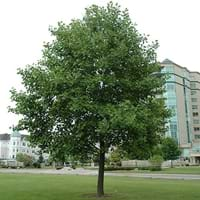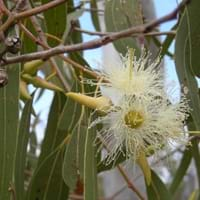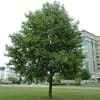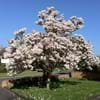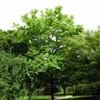Life Span
Perennial
Perennial
Origin
Northeastern United States, Mid-Atlantic United States, Southeastern United States, Central United States
Australia
Types
Ardis, Arnold, Aureomarginatum
Eucalyptus absita, Eucalyptus acies, Eucalyptus calycogona
Number of Varieties
Not Available
Habitat
Bluffs, low mountains, Moist Soils, Woodlands
River side
USDA Hardiness Zone
5-9
9-10
Sunset Zone
1a, 1b, 2a, 2b, 3a, 3b, 4, 5, 6, 7, 8, 9, 10, 11, 12, 14, 15, 16, 17, 18, 19, 20, 21, 22, 23
5, 6, 8, 9, 10, 11, 12, 13, 14, 15, 16, 17, 18, 19, 20, 21, 22, 23, 24
Habit
Pyramidal
Oval or Rounded
Flower Color
Orange, Light Yellow
Pink, Red, White
Flower Color Modifier
Bicolor
Not Available
Fruit Color
Lime Green, Brown
Yellow Brown
Leaf Color in Spring
Green, Light Green
Dark Green
Leaf Color in Summer
Green
Gray Green
Leaf Color in Fall
Yellow, Light Yellow, Yellow green
Gray Green
Leaf Color in Winter
Not Available
Gray Green
Leaf Shape
Irregular
Oval
Plant Season
Spring, Fall
Winter
Sunlight
Full Sun, Partial Sun
Full Sun
Type of Soil
Clay, Loam
Well drained
The pH of Soil
Acidic, Neutral
Slightly Alkaline
Soil Drainage
Average
Well drained
Bloom Time
Late Spring
Early Summer, Spring
Tolerances
Soil Compaction
Drought
Where to Plant?
Ground
Ground
How to Plant?
Seedlings
Stem Planting
Plant Maintenance
Low
Medium
Watering Requirements
Do Not over Water, Keep the ground moist but not water-logged, Requires regular watering
Requires regular watering, Requires watering in the growing season, Use and maintain water-efficient soaker hoses, Water Deeply, Water twice a day in the initial period
In Summer
Ample Water
Lots of watering
In Spring
Moderate
Moderate
In Winter
Average Water
Average Water
Soil pH
Acidic, Neutral
Slightly Alkaline
Soil Type
Clay, Loam
Well drained
Soil Drainage Capacity
Average
Well drained
Sun Exposure
Full Sun, Partial Sun
Full Sun
Pruning
Prune ocassionally, Remove dead branches
Prune for shortening long shoots, Prune if you want to improve plant shape, Prune ocassionally, Remove dead or diseased plant parts
Fertilizers
All-Purpose Liquid Fertilizer, fertilize in spring, Fertilize the soil instead of direct applying, Mulch
All-Purpose Liquid Fertilizer
Pests and Diseases
fusarium canker, nectria canker, yellow-poplar weevil
Canker, head rot, Mealybugs, Root rot
Plant Tolerance
Soil Compaction
Drought
Flower Petal Number
Not Available
Single
Fragrant Bark/Stem
No
Yes
Foliage Texture
Coarse
Medium
Foliage Sheen
Matte
Matte
Allergy
no allergic reactions
Itchiness, Pain and fatigue, Respiratory problems
Aesthetic Uses
Showy Purposes
Not Used For Aesthetic Purpose
Beauty Benefits
Not Available
Not Available
Environmental Uses
Shadow Tree, Shelter for wildlife
Air purification
Medicinal Uses
Arthritis, Digestion problems, Fever, Inflammation, Wounds
Burns, Cough, Fever, Joint pain, Pulmonary tuberculosis, Upset stomach
Part of Plant Used
Whole plant
Leaves
Other Uses
Food for animals, Grown for shade, Used as Ornamental plant, Used in Furniture
Oil is used as an industrial solvent, Oil is used in mosquito repellents, Used in paper industry
Used As Indoor Plant
No
No
Used As Outdoor Plant
Yes
Yes
Garden Design
Feature Plant, Shade Trees, Street Trees
Not Available
Botanical Name
LIRIODENDRON tulipifera
Eucalyptus
Common Name
Tulip Poplar, Yellow Poplar
Eucalyptus
In Hindi
ट्यूलिप पेड़
नीलगिरी
In German
Tulpenbaum
Eukalyptus
In French
tulipier
Eucalyptus
In Spanish
árbol de tulipán
Eucalipto
In Greek
δέντρο τουλίπα
ευκάλυπτος
In Portuguese
árvore de tulipa
Eucalipto
In Polish
tulipanowiec
Eukaliptus
In Latin
Tulipa arbore
Eucalyptus
Phylum
Tracheophyta
Magnoliophyta
Class
Magnoliopsida
Magnoliopsida
Order
Magnoliales
Myrtales
Family
Magnoliaceae
Myrtaceae
Genus
Liriodendron
Eucalyptus
Clade
Angiosperms, Magnoliids
Not Available
Tribe
Not Available
Eucalypteae
Subfamily
Not Available
Myrtoideae
Importance of Tulip Tree and Eucalyptus
Want to have the most appropriate plant for your garden? You might want to know the importance of Tulip Tree and Eucalyptus. Basically, these two plants vary in many aspects. Compare Tulip Tree and Eucalyptus as they differ in many characteristics such as their life, care, benefits, facts, etc. Every gardener must at least have the slightest clue about the plants he wants to plant in his garden. Compare their benefits, which differ in many ways like facts and uses. The medicinal use of Tulip Tree is Arthritis, Digestion problems, Fever, Inflammation and Wounds whereas of Eucalyptus is Burns, Cough, Fever, Joint pain, Pulmonary tuberculosis and Upset stomach. Tulip Tree has beauty benefits as follows: Not Available while Eucalyptus has beauty benefits as follows: Not Available.
Compare Facts of Tulip Tree vs Eucalyptus
How to choose the best garden plant for your garden depending upon its facts? Here garden plant comparison will help you to solve this query. Compare the facts of Tulip Tree vs Eucalyptus and know which one to choose. As garden plants have benefits and other uses, allergy is also a major drawback of plants for some people. Allergic reactions of Tulip Tree are no allergic reactions whereas of Eucalyptus have Itchiness, Pain and fatigue and Respiratory problems respectively. Having a fruit bearing plant in your garden can be a plus point of your garden. Tulip Tree has no showy fruits and Eucalyptus has no showy fruits. Also Tulip Tree is not flowering and Eucalyptus is flowering. You can compare Tulip Tree and Eucalyptus facts and facts of other plants too.
